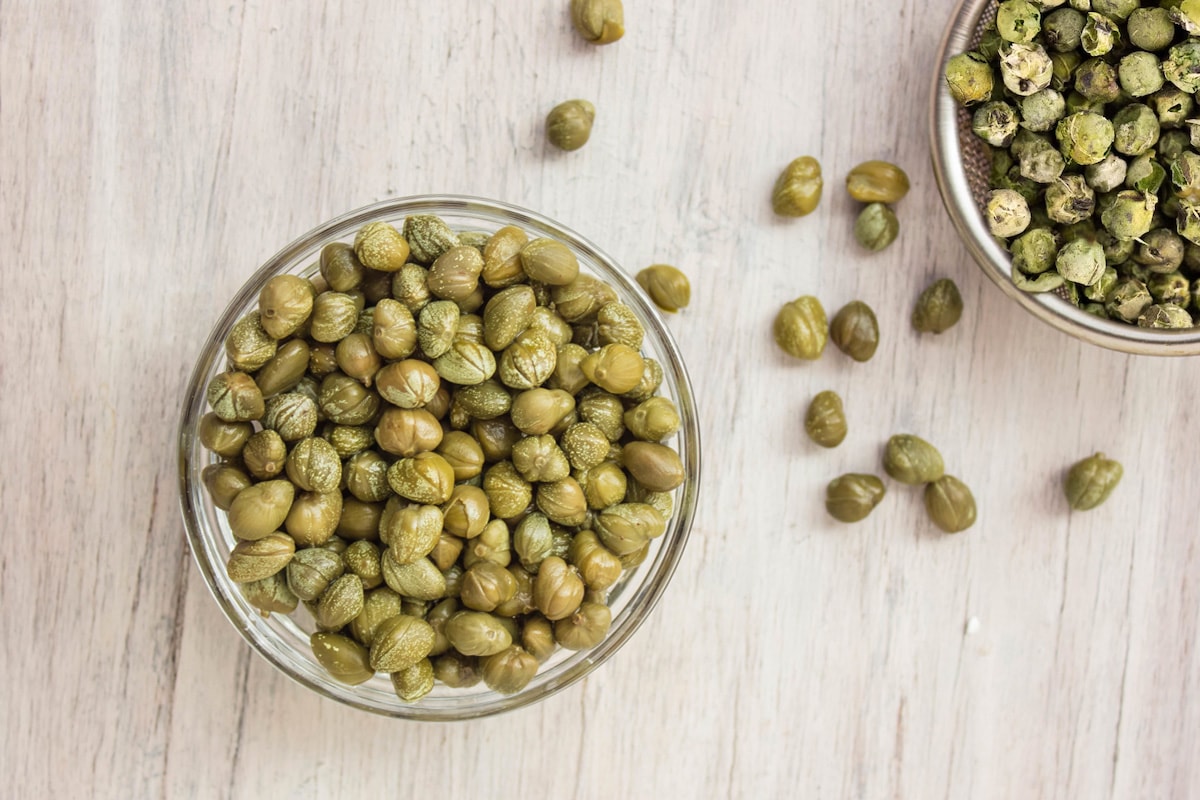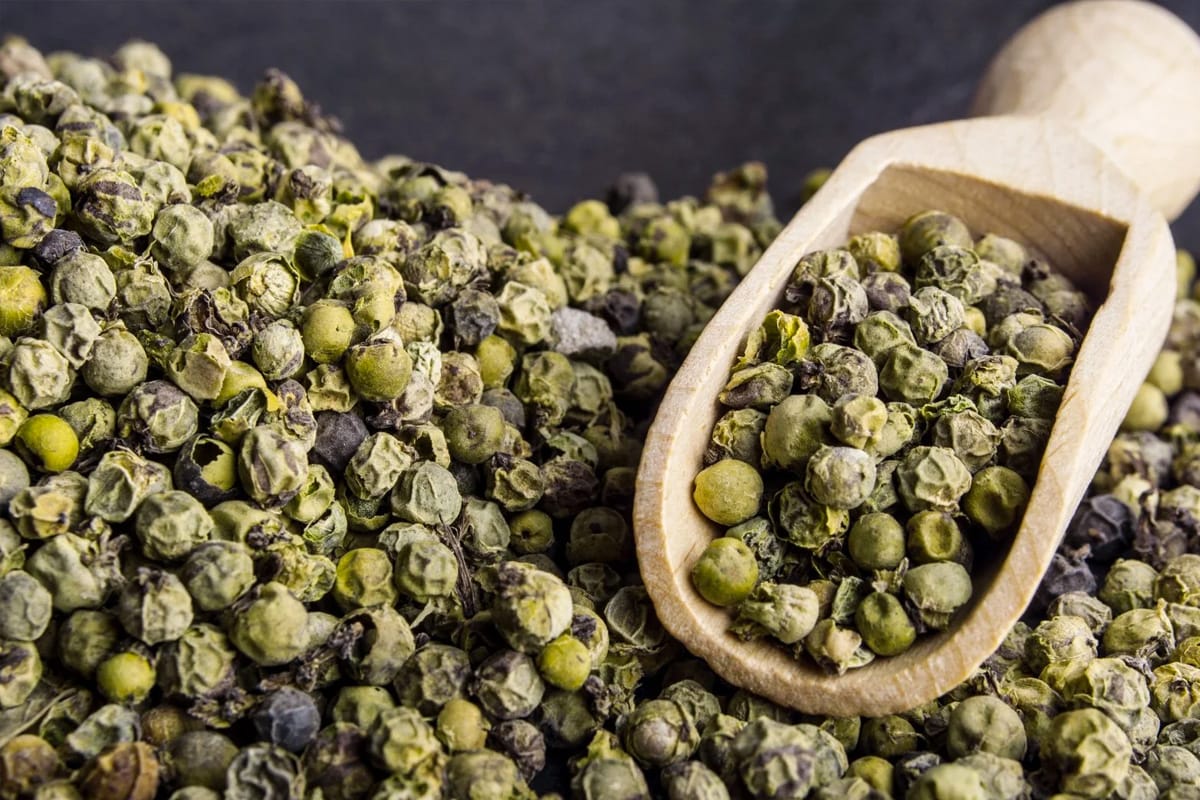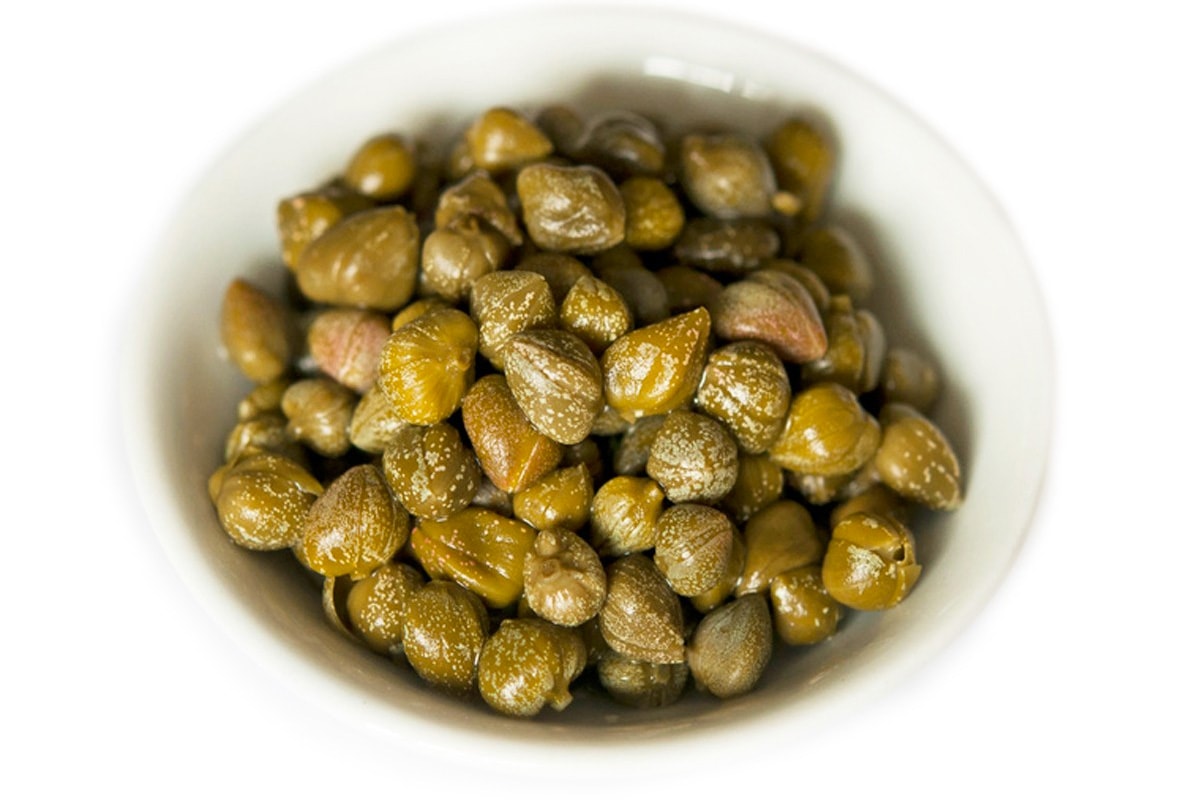Are you tired of using the same old ingredients to spice up your dishes? Why not try something new and exciting? Green peppercorns and capers are two ingredients that can add a unique flavor to your meals. But which one is better? Let’s explore the differences between these two ingredients and find out.

Green peppercorns and capers are both commonly used in Mediterranean and French cuisine. While they may seem similar, they have distinct differences in both taste and texture.
Green peppercorns, as the name suggests, are unripe peppercorns that are harvested before they turn red. These little gems are the unripe berries of the Piper nigrum vine, picked early to retain their vibrant green color and delicate flavor.
With their mild peppery notes and fresh, slightly fruity taste, green peppercorns will add a gentle kick to your dishes, especially in sauces, marinades, and meat dishes. Oh, and did I mention their charming, tender texture that’ll make you swoon?
On the other hand, capers are the flower buds of the caper bush that are pickled in vinegar or salt. Bursting with tangy, salty, and briny flavors, capers are like a surprise party for your taste buds. Trust me, adding capers to your dishes is like giving them a sparkly, flavor-filled makeover!
They have a tangy and salty taste and are commonly used in salads, pasta dishes, and sauces.
But wait, there’s more! Green peppercorns and capers aren’t just about taste – they both have unique culinary uses too. Green peppercorns can be crushed and sprinkled over your favorite dishes or incorporated into sauces for a touch of peppery charm.
On the other hand, capers can be tossed into salads, pasta, and fish dishes or used as a delightful garnish.
So, which one should you use in your next recipe? It all depends on the flavor profile you’re going for.
Green peppercorns are perfect if you want a subtle, earthy taste, while capers are ideal if you want a tangy, salty flavor.
What are Green Peppercorns?

If you’re a fan of bold, spicy flavors, you’re probably familiar with black peppercorns. But have you ever tried their milder, more delicate cousin – green peppercorns? These little berries are harvested before they’re fully ripe, giving them a unique flavor profile that sets them apart from their more well-known counterpart.
Flavor Profile
Green peppercorns have a bright, tangy flavor that’s less intense than black peppercorns. They have a slight sweetness to them, with subtle notes of citrus and herbs. Because they’re harvested before they fully mature, they also have a softer texture than black peppercorns.
Culinary Uses
Green peppercorns are a staple in many Southeast Asian cuisines, where they’re used in curries, stir-fries, and marinades. They’re also a popular ingredient in French cuisine, where they’re often used in sauces and with grilled meats.
One of the great things about green peppercorns is that they can be used in both savory and sweet dishes. Try adding them to fruit compotes or jams for a unique twist on a classic recipe. They also pair well with creamy cheeses and rich, fatty meats like duck or pork.
When using green peppercorns in your cooking, keep in mind that they’re more delicate than black peppercorns. They’re best added toward the end of cooking to preserve their flavor and texture.
You can also crush them lightly with a mortar and pestle to release their oils and create a more intense flavor.
Overall, green peppercorns are a versatile and flavorful ingredient that can add a unique twist to a wide range of dishes.
Give them a try and see how they can elevate your cooking!
What are Capers?

You may have seen capers listed as an ingredient in many recipes, but do you know what they are? Capers are the unripened flower buds of the caper bush, which is native to the Mediterranean and some parts of Asia.
They are usually harvested by hand in the early morning before the sun has a chance to wilt the buds.
Flavor Profile
Capers have a unique flavor that can be described as tangy, salty, and slightly bitter. They are often used as a seasoning or garnish to add a pop of flavor to dishes. The smaller the caper, the more intense the flavor.
Capers are usually sold pickled in vinegar, which adds another layer of tanginess to their flavor profile.
Culinary Uses
Capers are a versatile ingredient that can be used in a variety of dishes. They are commonly used in Mediterranean cuisine, but can also be found in other types of cuisine.
Here are some common culinary uses for capers:
- Add them to pasta dishes, such as spaghetti alla puttanesca
- Use them as a garnish for smoked salmon or other fish dishes
- Incorporate them into salad dressings or sauces
- Top pizzas with capers for an extra burst of flavor
- Combine them with olives and anchovies to make tapenade
Overall, capers are a flavorful and versatile ingredient that can add a unique touch to your dishes. Whether you’re a fan of Mediterranean cuisine or just looking to try something new, capers are definitely worth a try!
Green Peppercorns vs Capers
When it comes to adding flavor to your dishes, green peppercorns and capers are two popular choices. Both have their own unique taste and benefits, but how do they compare? Let’s take a closer look at the differences between green peppercorns and capers.
Differences in Flavor
Green peppercorns are harvested before they fully ripen, giving them a milder flavor compared to black peppercorns.
They have a fresh, slightly fruity taste with a mild peppery kick.
On the other hand, capers have a tangy, salty flavor that can add a burst of briny goodness to your dishes.
Nutritional Differences
Green peppercorns and capers both offer some nutritional benefits. Green peppercorns are a good source of vitamin C, iron, and potassium. They also contain antioxidants that can help protect your cells from damage.
Capers, on the other hand, are low in calories and high in fiber. They are also a good source of vitamin K, which is important for bone health.
Culinary Applications
Green peppercorns and capers can be used in a variety of dishes, but they each have their own unique culinary applications. Green peppercorns are often used in sauces, marinades, and rubs for meat dishes.
They can also be used in salads, stir-fries, and soups. Capers, on the other hand, are often used in Mediterranean and Italian cuisine to add flavor to pasta sauces, salads, and fish dishes.
They can also be used as a garnish for cocktails or as a topping for pizza.
Bottom line
If you are looking for a milder flavor with a hint of sweetness, then green peppercorns may be the way to go. They are versatile and can be used in a variety of dishes, such as sauces, marinades, and dressings.
On the other hand, if you are looking for a tangy and salty flavor, then capers may be the better choice. They are a staple in Mediterranean cuisine and are commonly used in pasta dishes, salads, and sauces.
Ultimately, the choice between green peppercorns and capers will depend on your personal taste and the specific dish you are making.
Experiment with both and see which one you prefer!
🤔 Answering Your Questions:
What are the main differences between green peppercorns and capers?
Green peppercorns are unripe berries from the Piper nigrum vine, offering a mild, peppery taste with a slightly fruity note. Capers, on the other hand, are edible flower buds from the Capparis spinosa plant, often pickled or packed in brine, delivering a tangy, salty, and briny flavor.
Can I substitute one for the other in a recipe?
While green peppercorns and capers have different flavors, they can sometimes be substituted for each other depending on the dish. However, be aware that the flavor profile will change, and it’s essential to adjust the quantity accordingly due to the different taste intensities.
How should I store green peppercorns and capers?
Green peppercorns can be stored in a cool, dry place away from direct sunlight, while capers should be kept in their brine or pickling liquid, in a sealed container in the refrigerator after opening.
Are there any other types of peppercorns and capers I should be aware of?
Other types of peppercorns include black, white, and pink peppercorns, each with their distinct flavor profiles. As for capers, there are various sizes available, with smaller capers (nonpareils) being the most prized for their delicate flavor and texture. Capers can also be found packed in salt, which needs to be rinsed off before use.

Leave a Reply